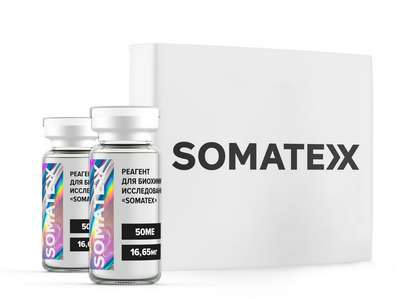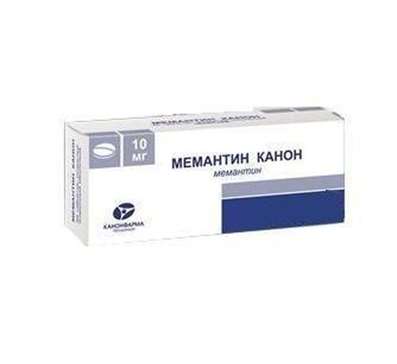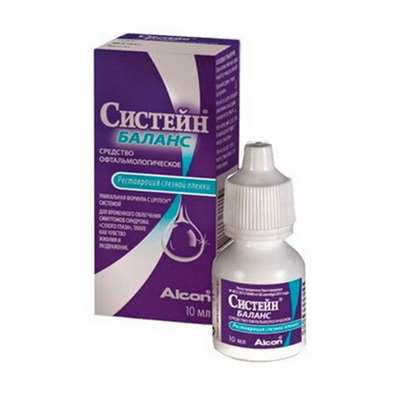Instruction for use: Cortisone (Cortisonum)
I want this, give me price
Pharmacological group
Glucocorticosteroids
Nosological classification (ICD-10)
E23.0 Hypopituitarism
Kalmann's syndrome, Infantilism pituitary, Dwarfism is cerebral-pituitary, Cachexia pituitary, Cachexia diencephalo-pituitary, Anovulatory disorders, Symmonds disease, Secondary hypogonadism in men, Secondary hypogonadotropic hypogonadism, Hypogenitalism, Hypogonadism, Hypogonadism hypogonadotropic, Hypogonadism of the pituitary, Hypogonadism in men, Hypogonadotropic hypogonadism, Hypopituitarism, Pituitary insufficiency, Lack of growth in children with hypopituitarism, Pangypopituitarism, Primary hypogonadism, Primary hypogonadotropic hypogonadism, Shihan Syndrome, Shihina's Syndrome, Symmonds-Glinsky disease, Laron's dwarfism, Sheena's Syndrome, Syndrome of a fertile eunuch
E25 Adrenogenital disorders
Macroghenytozomy in boys, Adrenogenital syndrome, Decreased function of the sex glands, Congenital dysfunction of the adrenal cortex, Apera-Halle Syndrome, Crook-Apera-Halle Syndrome
E27.1 Primary insufficiency of the adrenal cortex
Addison's Disease, Addisonism, Adrenocortical insufficiency, Hypofunction of the adrenal cortex, Collapse with Addison's Disease, Insufficiency of the adrenal cortex primary, Primary adrenocortical insufficiency, Primary adrenal insufficiency
E27.4 Other and unspecified adrenocortical insufficiency
Hypocorticism, Hypoaldosteronism, Adrenal insufficiency, Insufficiency of the adrenal cortex, Insufficiency of the adrenal cortex, Secondary adrenocortical insufficiency, Secondary adrenal insufficiency, Secondary insufficiency of the adrenal cortex, Temporary decrease in the function of the adrenal cortex, Dysfunction of the adrenal cortex
Code CAS53-06-5
Characteristics
Glucocorticoid. Cortisone acetate - white or white with a slight yellowish tinge crystalline powder odorless. Virtually nerastvorim in water, very slightly soluble in ethanol, easily soluble in chloroform, soluble in dioxane, it is difficult to dissolve in acetone. Molecular weight 402.49.
Pharmacology
Pharmacological action - anti-inflammatory, antiallergic, immunosuppressive, desensitizing.
The anti-inflammatory effect is caused by the inhibition of phospholipase A2, which leads to inhibition of PG synthesis, a decrease in the release of macrophage chemotactic factor, a decrease in the migration of macrophages and lymphocytes to the inflammation focus, stabilization of lysosomal membranes and prevention of lysosomal enzymes. Immunosuppressive effect is associated with a decrease in the number of immunocompetent cells, a decrease in the binding of immunoglobulins to cellular receptors, suppression of blastotransformation of B-lymphocytes, a decrease in the number of interleukins, lymphokines, circulating immunocomplexes, complement fractions. It causes a delay in sodium and water, increases the excretion of potassium. It increases the excretion of calcium in the urine, activates lysis of bone tissue by indirectly increasing the amount of calcitonin, increases the activity of osteoclasts, and reduces osteoblasts. Stimulating enzyme systems of the liver, activates gluconeogenesis and increases the concentration of glucose in the blood. Having catabolic action, increases the breakdown of proteins. Has a lipolytic effect, increasing the content of fatty acids in the blood. Reduces the production of ACTH in the anterior pituitary gland (the principle of negative feedback), which causes suppression of incretion and subsequent atrophy of the adrenal cortex. After the / m introduction slowly absorbed. After oral administration, it is almost completely absorbed from the digestive tract. Tmax in the blood is achieved after 1-2 hours, the action lasts 6-8 hours.
Application of Cortisone
According to the State Registry: chronic adrenal insufficiency (Addison's disease, hypokorticism after bilateral total adrenalectomy, hypopituitarism with secondary hypocorticism, congenital dysfunction of the adrenal cortex) - in combination with mineralocorticoids.
Contraindications
Hypersensitivity (for short-term use according to vital indications is the only contraindication). Parasitic and infectious diseases of a viral, fungal or bacterial nature (currently or recently transferred, including recent contact with a patient) - herpes simplex, herpes zoster (viremic phase), chicken pox, measles; Amebiasis, strongyloidiasis (established or suspected); Systemic mycosis, tuberculosis. The vaccination period (8 weeks before and 2 weeks after vaccination), lymphadenitis after BCG vaccination. Immunodeficiency conditions (including AIDS or HIV infection). Diseases of the gastrointestinal tract: peptic ulcer of the stomach and duodenum, esophagitis, gastritis, acute or latent peptic ulcer, newly created intestinal anastomosis, ulcerative colitis with perforation or abscessing, diverticulitis. Diseases of the cardiovascular system, incl. Recently suffered myocardial infarction, decompensated chronic heart failure, severe arterial hypertension, hyperlipidemia. Endocrine diseases - diabetes (including a violation of carbohydrate tolerance), thyrotoxicosis, hypothyroidism, Cushing's disease. Inclination to thromboembolism, renal and / or hepatic insufficiency, nephrourolythiasis, hypoalbuminemia and conditions predisposing to its occurrence, myasthenia gravis, obesity (III-IV century), poliomyelitis (with the exception of the form of bulbar encephalitis), open and closed angle glaucoma.
pregnancy and lactation
When pregnancy is possible, if the expected effect of therapy exceeds the potential risk for the fetus (adequate and strictly controlled safety studies have not been conducted). For babies born to mothers who took corticosteroids during pregnancy, it is necessary to carefully monitor (hypofunction of the adrenal gland is possible).
Side effects
The frequency of development and the severity of side effects depend on the duration of the application, the amount of the dose used and the possibility of observing the circadian rhythm of the appointment.
On the part of the endocrine system: a decrease in glucose tolerance, steroid diabetes mellitus or manifestation of latent diabetes mellitus, suppression of adrenal function, Itenko-Cushing syndrome (lunar face, obesity of the pituitary type, hirsutism, increased blood pressure, dysmenorrhea, amenorrhea, myasthenia, strias), delay Sexual development in children.
On the part of the intestine: nausea, vomiting, pancreatitis, steroid ulcer of the stomach and duodenum, erosive esophagitis, bleeding and perforation of the gastrointestinal tract, increase or decrease in appetite, flatulence, hiccough; In rare cases - an increase in the activity of hepatic transaminases and alkaline phosphatase.
From the cardiovascular system and blood (hematopoiesis, hemostasis): arrhythmia, bradycardia (up to cardiac arrest); Development (in predisposed patients) or increased severity of heart failure, changes in ECG, characteristic of hypokalemia; Increased blood pressure, hypercoagulation, thrombosis. In patients with acute and subacute myocardial infarction - the spread of the focus of necrosis, slowing the formation of scar tissue, which can lead to rupture of the heart muscle.
From the nervous system and sense organs: delirium, disorientation, euphoria, hallucinations, manic-depressive psychosis, depression, paranoia, increased intracranial pressure, nervousness or anxiety, insomnia, dizziness, vertigo, pseudotumor, cerebral palsy, headache, convulsions, posterior subcapsular cataract , Increased intraocular pressure with possible damage to the optic nerve, a tendency to develop secondary bacterial, fungal or viral infections of the eyes, trophic changes in the cornea, exophthalmos.
On the part of metabolism: increased excretion of Ca2 +, hypocalcemia, weight gain, negative nitrogen balance (increased protein breakdown), increased sweating. Effects due to mineralocorticoid activity - fluid retention and Na + (peripheral edema), hypernatremia, hypokalemic syndrome (hypokalemia, arrhythmia, myalgia or muscle spasm, unusual weakness and fatigue).
On the part of the musculoskeletal system: slowing growth and ossification processes in children (premature closure of epiphyseal growth zones), osteoporosis (very rarely - pathological bone fractures, aseptic necrosis of the head of the humerus and thigh bone), rupture of tendons, steroid myopathy, atrophy).
On the part of the skin: delayed healing of wounds, petechiae, ecchymosis, thinning of the skin, hyper- or hypopigmentation, steroid acne, striae, propensity to develop pyoderma and candidiasis.
Allergic reactions: generalized (skin rash, itching, anaphylactic shock), local allergic reactions.
Other: development or exacerbation of infections (the appearance of this side effect is promoted by jointly used immunosuppressants and vaccination), leukocyturia, withdrawal syndrome.
Interaction
Strengthens the effect of anticoagulants, antiaggregants, side effects of NSAIDs, cardiac glycosides, estrogens, androgens and steroid anabolics, amphotericin B, asparaginase. Reduces the effectiveness of hypoglycemic, hypotensive and diuretics.
Routes of administration
Inside.
Precautions
During treatment, it is necessary to control the intraocular pressure and the state of the cornea. Cancellation should be carried out gradually, reducing the dose, in order to avoid the development of withdrawal syndrome; The longer the course of treatment, the slower the dose reduction should be.
In children during growth, glucocorticoids should be used only in absolute indications and under close medical supervision. Children during long-term treatment need to monitor the dynamics of growth and development. Children who, during treatment, were in contact with sick measles or chicken pox, prophylactically prescribe specific immunoglobulins.
special instructions
The use in severe infectious diseases is permissible only against the background of specific therapy.

 Cart
Cart





